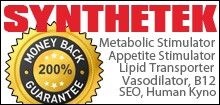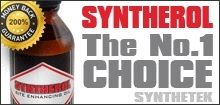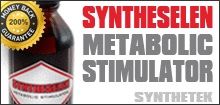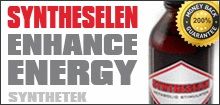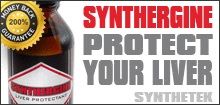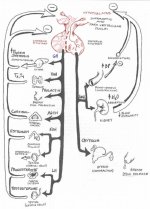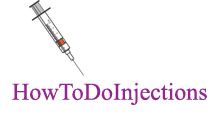i have read Lyle macdonald book on bromo, there is any way you think that should be possible to restart our setpoint bodyfat wise?
it seems the pros do that ... does gh can do that ?
and what about killing fat cells ?
after reading the book on bromo it seems a good option to keep bf at aceptable levels and gain muscle but there would be other options ? maybe better options to keep hormonal levels stable on dieting or growing so one can put as mutch muscle as possible avoiding as mutch bf as possible ? with good nutrition of course
Well Lyles' book is not very scientific. But the rest of your questions go to the heart of the subject.
Is there such a thing as "set point"? YES
How is it induced? Through periods of drastic drops in negative energy balance coupled with body fat loss.
For example of how this works, the following abstract:
Estradiol has been implicated in the regulation of food intake; however, its effect seems to be exerted in a bimodal fashion. We examined whether a single im injection of estradiol valerate (E2V), lastingly effective, could induce changes in parametrial fat function that further induce a new set point of leptin sensitivity in the female rat. E2V induced severe anorexia and loss of body weight between d 4 and 12 posttreatment. E2V rats recovered normal food intake and departing body weights on wk 2 and 3 posttreatment, respectively; however, they did not reach body weights of control rats. On d 61 posttreatment, we found that unfasting E2V, vs control, rats displayed increased E2 and leptin circulating levels; reduced plasma tumor necrosis factor-alpha(TNF-alpha) concentrations; similar circulating levels of glucose, insulin, and triglyceride; and lower parametrial fat mass containing a higher number of adipocytes that, although normal in size, in vitro released more leptin.
...Our data strongly support a potent acute anorectic effect of E2 and that, after several weeks, E2 modified parametrial fat function and insulin sensitivity, protecting the organism against future unfavorable metabolic conditions. - Impact of estradiol on parametrial adipose tissue function: evidence for establishment of a new set point of leptin sensitivity in control of energy metabolism in female rat, J Piermaria, Endocrine, April 1, 2003; 20(3): 239-45.
In another study that measured Leptin & Ghrelin in Pro Bodybuilders as they dieted for a competition,
Increases in ghrelin and decreases in leptin without altering adiponectin during extreme weight loss in male competitive bodybuilders, Jarek Maestu, Metabolism Clinical and Experimental 57 (2008) 221–225 they concluded,
There is also some evidence that ghrelin antagonizes leptin action at the hypothalamic level [
28].
In conclusion, ghrelin concentrations significantly increase in the condition of negative energy balance that is accompanied by significant body mass loss in male subjects with initial low body fat values.
However, despite continual negative energy balance and significant body mass loss, ghrelin concentrations reached a plateau beyond which there is no further increase in ghrelin.
28 - Shintani M, Ogawa Y, Ebihara K, et al. Ghrelin, an endogenous growth hormone secretagogue, is a novel orexigenic peptide that antagonizes leptin action through the activation of hypothalamic neuropeptide Y/ Y1 receptor pathway, Diabetes 2001;50:227-32
I was looking for a study that I have somewhere that measured hormonal levels and examined biological set-points in older people who went through several years of mass starvation when they were young. It was fascinating but damn it... I can't find it at the moment.
The point is that there can be set-points that change not only for the quantity of fat cells but in how they behave. Fatcells as a mass, or as a group basically act as an organism. They send out factors that communicate with peripheral tissue that effect peripheral tissue metabolism. That is why I consume macadamia oil.
The interplay between Leptin & Ghrelin or the balance between those two hormones if energy balance & fat mass is driven to extremes probably is the tip of the iceberg. There comes a point as seen in the bodybuilder study where Leptin does not decrease & Ghrelin does not increase and yet fat cells continue to shrink, fatmass decrease and perhaps fat cells die
** .
If this state is held for a period of time when energy balance is resumed and the Leptin/Ghrelin system begins functioning again we may have a new setpoint.
Please don't rely on this scientifically because is either an over-simplification or just straight-up Dat bullshit

...but seriously this is where the mind has to go to try to explain why when I, you and others drive our bodyfat down to say 7% (in men) and single digits (in women) we have a new "perceived" set point.
** - Energy deficit stimulates free fatty acid release from adipocytes (lipolysis), generating smaller adipocytes. Adipose tissue mass can also shrink due to loss of cells via apoptosis, a regulated cell death program. - Adipose cell apoptosis: death in the energy depot, A Sorisky, International Journal of Obesity (2000) 24, Suppl 4, S3-S7
NOTE to self: Go back and research adipose cell apoptosis.





